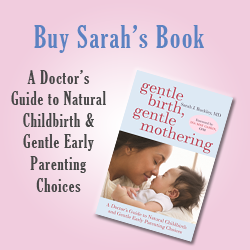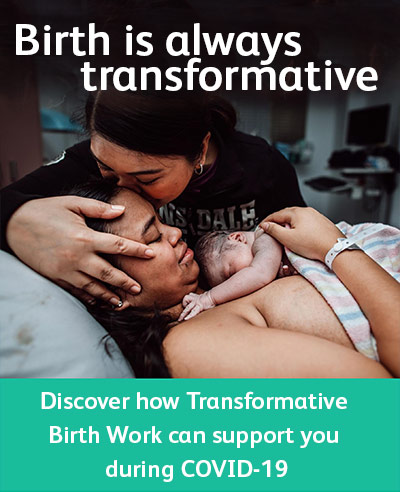If you are pregnant right now, you can’t have missed it. For maternity care providers, it’s been the topic of the year. Should healthy, low-risk women should be routinely induced at 39 weeks?
On August 9, the ARRIVE study (A Randomized Trial of Induction Versus Expectant Management) was finally published in full, reigniting a media storm on this topic.
But what is this based on? What are the benefits? And, most importantly, should we all be getting on the ‘induction express’?
(For more great articles like this, make sure to sign up to my newsletter)
The ARRIVE study was designed to test whether inducing healthy mothers in their first pregnancy was a benefit (or not) for themselves and their babies. Women were randomised to routine induction at 39 weeks or ‘expectant management’ (more about this below) and outcomes for women and babies were recorded and analysed.
Researchers found similar outcomes for both groups of mothers and babies, with somewhat lower caesarean rates in the induced women (18.6 vs 22.2%) as well as a slight reduction in late pregnancy complications such as high blood pressure. (This makes sense, as the induced women had a shorter time in late pregnancy to develop these complications.)
While overall this study was well funded and conducted, it raises many more questions than we currently have answers, and is certainly not a reason to start inducing every mother and baby.
Firstly, over 50 000 women were considered for this study but less than half were eligible because the definition of ‘low risk’ was very tight. Of these women, only 6 000 agreed to participate, suggesting that being randomly assigned to induction was not popular. Are these 6000 women representative enough of the general population that we can apply the findings to other low-risk, first-time mothers?
In addition, these 6000 women gave birth in well-resourced, high-level hospitals, where everyone was keen to apply the criteria and especially the strict protocols for induction. Would this apply to other maternity hospitals, with different protocols and less motivated staff?
And given that these women were generally low-risk enough to birth outside the hospital, there were some surprisingly poor outcomes. In both groups, around 1 in 9 babies were admitted to NICU and only 1 in 3 women were exclusively breastfeeding at 4-8 weeks. While the caesarean rate was lower for induced women, 18% is still quite high for such a low-risk group. If these women had planned to give birth at home, for example, the chance of caesarean would have been less than 10%.
It is possible that some of these poorer outcomes happened in both groups relatively equally because the groups were actually not so different. In this study, ‘expectant management’ included possible induction after 40 weeks and 5 days, which is actually shorter than the average gestation for first-time mothers – 41 weeks and 1 day, and all women in this expectant management group were required to be induced no later than 42 weeks and 2 days. Consequently, many women who were assigned to ’expectant management’ may later have been induced, although this number has not yet been revealed.
Women who were in the induced group spent many more hours in the labour and delivery unit (20 hours vs 14). This may reflect that women who were induced at 39 weeks were not as ready for labour, compared to the expectant group who would have given birth at a later gestation, even if induced. This means that their bodies (and babies) had greater readiness for labour.
It is likely that many care providers will now start to recommend routine induction at 39 weeks. You may have even been encouraged to accept induction, which is certainly more convenient for hospitals and care providers than waiting for labour to begin. However, this would put huge pressures on maternity care resources, and with the main benefit being possibly 4 fewer women per 100 having a caesarean.
In contrast, the best scientific studies that we have suggest that having your own supportive birth companion (doula) will reduce your need for a caesarean, while supporting, rather than disrupting, the natural processes for you and your baby. For example, the Cochrane systematic review for supportive birth companion (see links below) shows a 25% reduction in caesarean risk in women with continuous labour support vs a 16% reduction in this study.
In addition, choosing care with your own midwife, from pregnancy through labour and birth, lessens your need for analgesia, while also reducing risks of preterm birth and increasing satisfaction. (Midwifery care also decreased caesarean rates in most studies included in the Cochrane systematic review- see link below-but this was not statistically significant in the overall review- see below)
As I describe in my report, Hormonal Physiology of Childbearing, the natural (physiological) onset of labour is a pivotal time. While we don’t fully understand the processes that initiate human labour, we believe that the baby signals readiness for labour, birth and life outside the womb to the mother through placental hormones. These signals promote ‘prelabour physiologic preparations’ for mother and baby, which will make labour and birth as efficient, pleasurable, and safe as possible, for both.
Physiologic labour onset, by definition, allows the full maturity of the baby’s body and brain, which is also growing rapidly in the final weeks in the womb. Could disrupting these final weeks of brain development have longer-term effects? Several studies have found better developmental and academic outcomes for every extra week of pregnancy, even up to 41 weeks (see studies below).
You can read a lot more about this controversial study in the links below.
In the meantime, please don’t be swayed or scared into an unnecessary induction because of this study.
More Information and Resources
The ARRIVE Study: free abstract and accompanying editorial
Responses from maternity care providers and consumer groups
- “That’s a feminist issue!” from Milli Hill and Positive Birth (UK)
- What women need to know from BellyBelly
- Great infographic from Mindful Childbirth Santa Cruz
- In-depth critique from Henci Goer in Science and Sensibility
- “Why Induction Matters” book and Midwife Thinking blog from Rachel Reed
Professional group responses:
- Response from Australian professionals in Women and Birth journal
- Response from the Society for Maternal-Fetal Medicine (US)
- Response from American College of Obstetricians and and Gynecologists (ACOG)
- Response from American College of Nurse-Midwives (ACNM)
Other research
- Hormonal Physiology of Childbearing
- Benefits of midwifery care
- Benefits of supportive birth companion (doula)
- benefits of home birth
- Benefits of longer gestation for academic achievement



 Discover the science and pleasure of Ecstatic Birth!
Discover the science and pleasure of Ecstatic Birth!